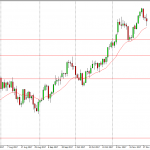By Steven Levine
Turkey’s banks have generally come under significant pressure and have spurred contagion to other parts of Europe, as the country battles a long list of adverse macro conditions.
Bond investors in Turkish financial institutions have grown increasingly worried about the sustainability of several of the country’s banks’ ability to repay their debt.
Over the past three months, spreads on many banks’ five-year credit swaps (CDS) have mushroomed by anywhere from around 235bps to more than 350bps.
Akbank’s (AKBTY) five-year CDS, for example, has blown out by close to 355bps over the past three months, according to Bloomberg data.

While the bank’s borrowings increased around 32.8% year-on-year in the second quarter 2018, much of its debt is denominated in U.S. dollars, which has helped make financing more challenging as the exchange value of the Turkish lira deteriorates.
Consequently, certain of AKBTY’s bonds have fallen considerably, along with its stock.
The bank’s 5.0% notes due October 2022 were recently quoted at a yield of around 11.2%, a year-on-year rise of about 6.8%. Shares of AKBTY have also suffered a decline of more than 70% over the same period.
Another Turkish bank, Turkiye Vakiflar Bankasi (TKYVY), has been under similar pressure. Its 5-year CDS has ballooned by over 380bps over the past three months, while the yield on its 6% notes due November 2022 have risen close to 14% year-on-year to about 19.5%. TKYVY’s American Depositary Receipts (ADRs) have also plummeted to nearly US$5.50 from around US$20.50 over the past year.

Credit profile damage and central bank support
In late August, Moody’s Investors Service cut its credit ratings on 18 Turkish banks and two finance companies, citing “a substantial increase in the risk of a downside scenario.”
According to Moody’s analyst Carlo Gori, Turkish banks have around US$186bn in foreign currency-denominated market funds as of June 2018. This level equates to 75% of their total wholesale funds, making the banking system “particularly sensitive to potential shifts in investor sentiment” given the need to refinance these liabilities on an ongoing basis.













Leave A Comment